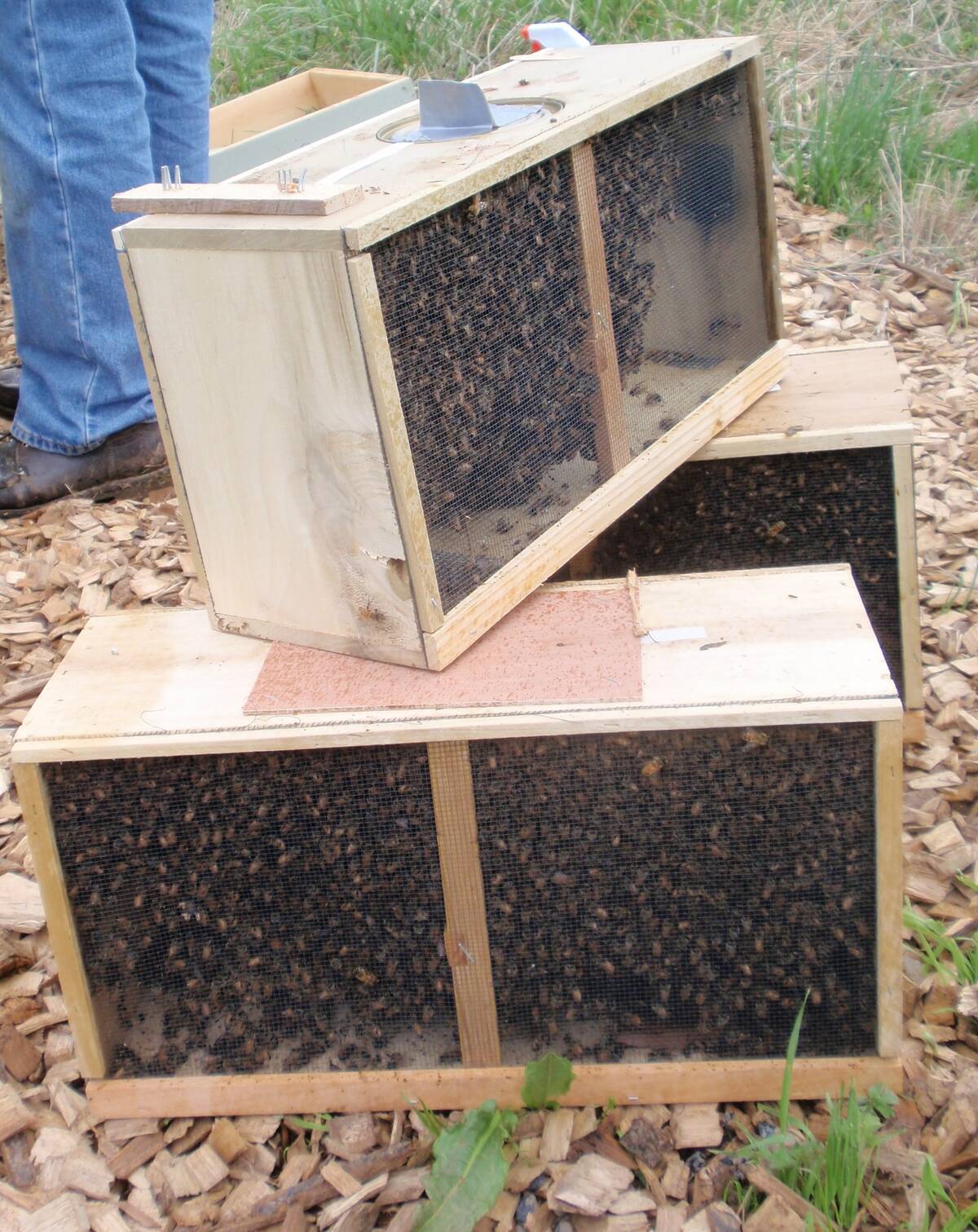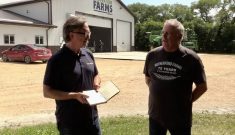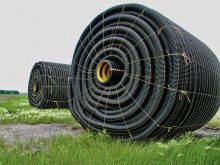Glacier FarmMedia — Brian Hefty came to Manitoba Ag Days on Jan. 22 to give a speech about how to “push the limits” for crop yields.
The South Dakota farmer did focus on crop nutrition and why it’s critical for producers to understand the results of a soil test.
However, the first 17 minutes of Hefty’s presentation about boosting yields were dedicated to the benefits of tile drainage.
Read Also

Canadian beekeepers call for regulatory accountability
Beekeepers say the Canadian Food Inspection Agency should restore packaged U.S. bee shipments, claiming the agency isn’t following evidence.
The No. 1 benefit is preventing soil from becoming saturated, a major detriment to root development and crop yield.
“Plants will not grow into a water table,” said Hefty, who drew a crowd of 350 to 400 people at Ag Days, including dozens of young farmers.
“We want the ability for the plant roots to go down…. They have to have some room to grow.”
Hefty and his brother, Darren, farm near Baltic, a town north of Sioux Falls. They operate Hefty Seed Company and co-host Ag PhD TV, “the most-watched agronomy television show in the U.S.,” says the Ag Days website.
Hefty’s presentation included a slide on the many benefits of tile drainage. Based on his experience and knowledge, the list includes:
Higher yields.
Reducing salt levels in the soil.
Speeding up all field operations from planting to harvest.
Reducing surface water.
Minimizing stuck situations.
“Come on. Tile isn’t going to help me with all that,” Hefty said, echoing a common reaction from skeptics.
“It does. It’s a fact…. I’ve experienced it … on all of our ground.”
Hefty reminded the audience that the ideal composition of soil is 50 per cent soil particles, 25 per cent water and 25 per cent air.
When the soil is over-loaded with water, it can kill microbes, stunt root growth and thwart crop production.
Such a situation did happen in parts of the Prairies in 2024.
Spring rain saturated canola fields in many parts of Saskatchewan, and that flooding caused lower yields.
“We had six inches (150 millimetres) of moisture from May 1 until the end of June,” said Travis Wiens, an agronomist with MNP in Milestone, Sask., south of Regina.
“Every week we were getting almost an inch (25 mm) of rain. This is specific to our geography, but a lot of south Saskatchewan would be in the same position.”
The consequence of the consistent spring rain was stunted canola roots. When the weather turned hot and dry, the plants weren’t prepared for summertime drought.
It’s possible that drainage tile can preserve crops yields during years with too much moisture on the Prairies.
However, Saskatchewan isn’t the same as eastern South Dakota.
The city of Sioux Falls receives about 660 mm of precipitation in an average year.
Regina, in comparison, receives 390 mm per year.
Nonetheless, nearly every farmer in Western Canada has a half section of land or 40 acres in a certain field that’s prone to flooding.
More producers are turning to drainage tile to fix those problem areas, said Mylen Dunbar of NextGen Drainage Solutions in Pilot Mound, Man.
“Like I tell all the guys … start with your worst (field). What’s your worst field, where’s your ROI going to come back?” Dunbar said at Ag Days.
Managing the water table and preventing soaked soil is good for roots, but tile drainage also helps with salinity and reduces soil erosion.
“Let’s say you have untiled ground and it’s 100 per cent saturated,” Hefty said, noting if it continues to rain, more water will flow off the field.
“It’s going to carry soil, chemical and fertilizer with it — (three) things you don’t want to lose.”
It may offer multiple benefits and it can boost yield, but tile drainage is not cheap.
The cost ranges from $1,200 to $1,800 per acre in Western Canada, depending on tile spacing and if the field is gravity drained or not.
“Pumps and lift stations, (they) boost that per acre cost,” Dunbar said.
It’s a substantial investment, but some producers are choosing to install tile on their existing land base.
“Land prices have gone through the roof.… Why not (improve) 20 or 40 acres of a quarter section?” Dunbar said.
“And then farm that (land) … instead of trying to buy more land.”
















